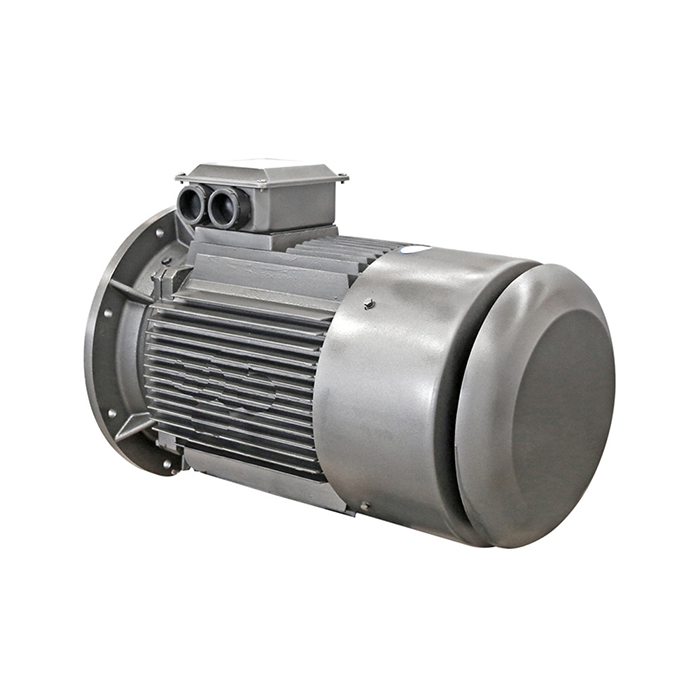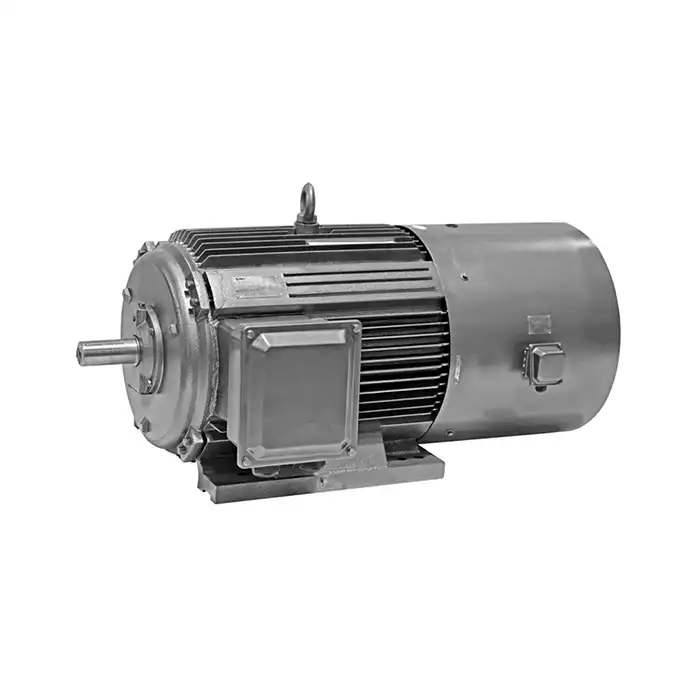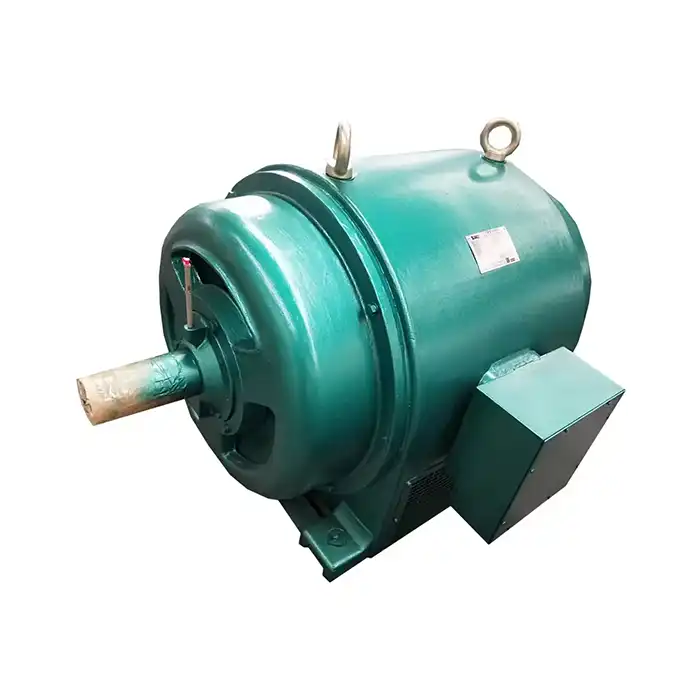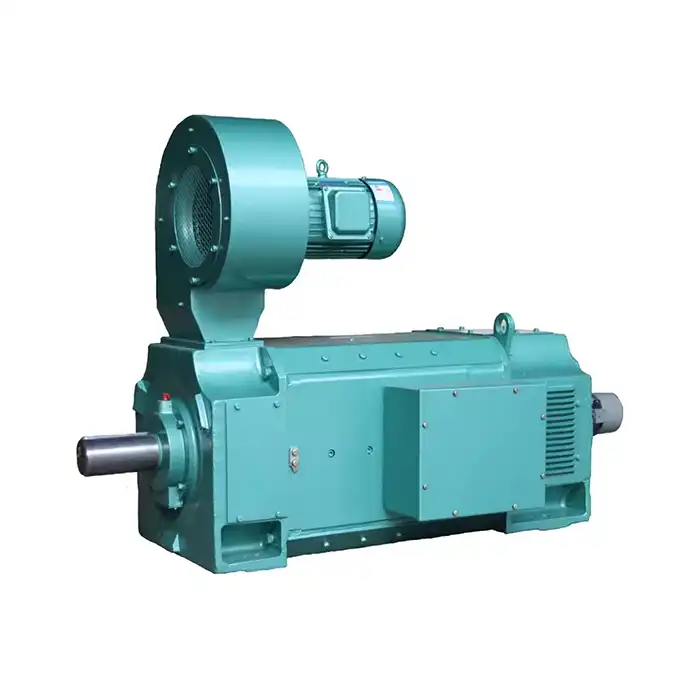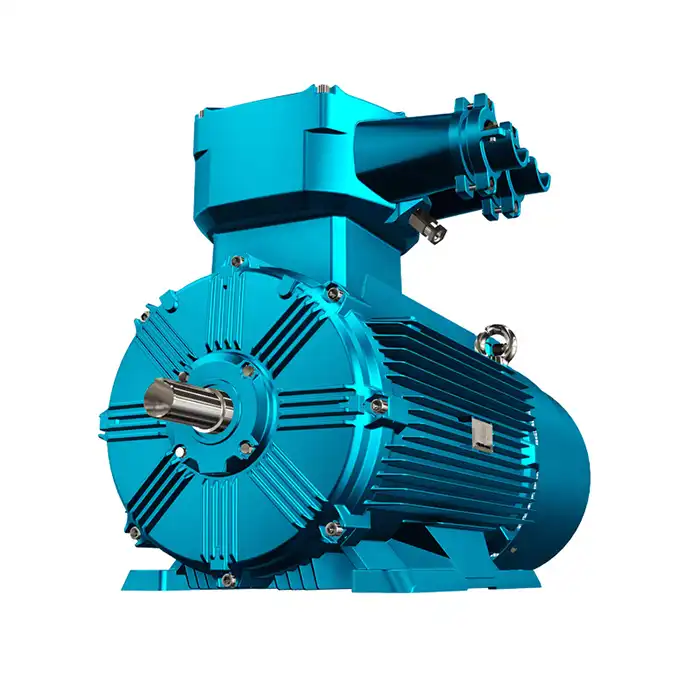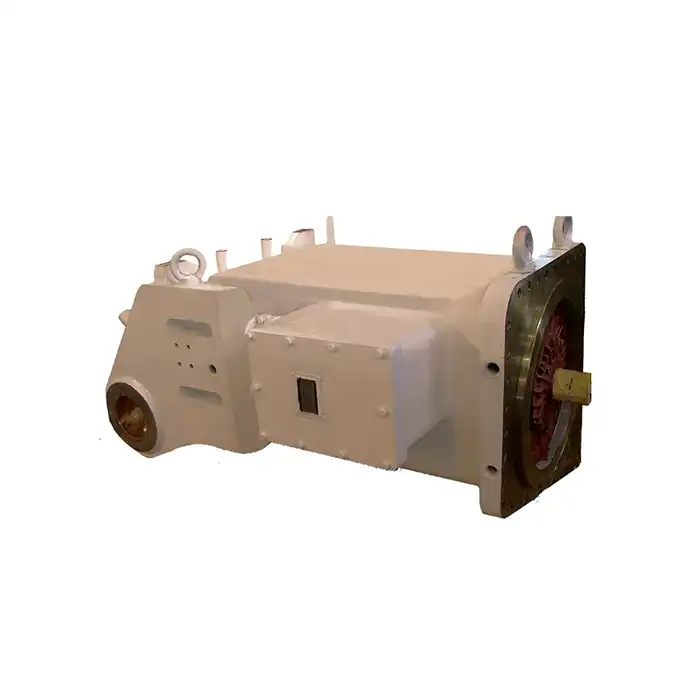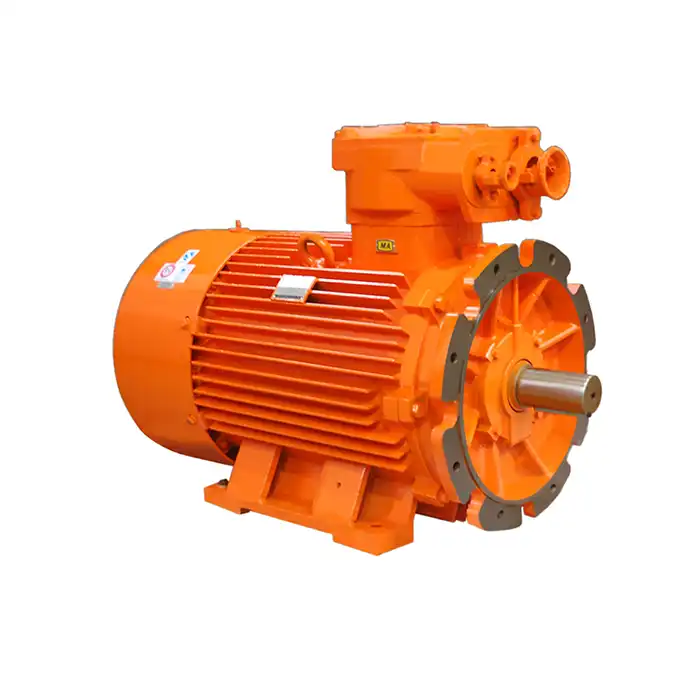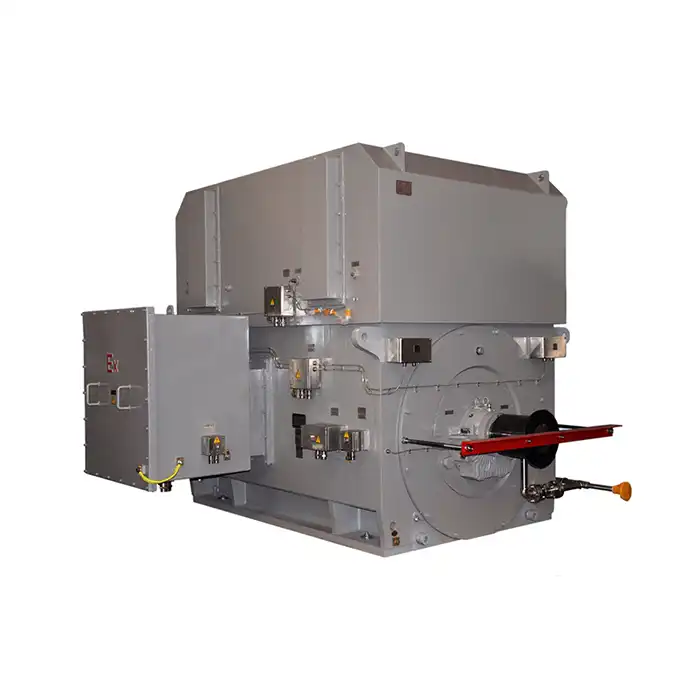Why Choose 3.3 kV Motors Over Lower Voltage Options?
In the realm of industrial power systems, the selection of appropriate motor voltage plays a crucial role in determining overall system efficiency and performance. Among the various options available, 3.3 kV motors have gained significant traction due to their unique advantages over lower voltage alternatives. This article delves into the reasons why 3.3 kV motors are often preferred in certain applications, examining their energy efficiency, cost-effectiveness, and suitability for long-distance power transmission.

Energy savings: 3.3 kV vs 415V motor comparison
When it comes to energy efficiency, 3.3 kV motors offer substantial benefits compared to their lower voltage counterparts, such as 415V motors. The higher voltage allows for reduced current flow, which translates to lower power losses and improved overall system efficiency.
Reduced Power Losses
One of the primary advantages of 3.3 kV motors is their ability to minimize power losses. In electrical systems, power loss is proportional to the square of the current (I²R losses). By operating at a higher voltage, 3.3 kV motors require less current to deliver the same power output as lower voltage motors. This reduction in current leads to significantly lower resistive losses in the motor windings and power distribution system.
For example, consider a 500 kW motor operating at full load. A 415V motor would require approximately 695 A of current, while a 3.3 kV motor would only need about 87 A. This substantial reduction in current results in much lower I²R losses, improving the overall efficiency of the system.
Improved Power Factor
Another benefit of 3.3 kV motors is their typically higher power factor compared to lower voltage options. Power factor is a measure of how effectively electrical power is being used in a system. A higher power factor indicates more efficient power utilization and reduced reactive power consumption.
3.3 kV motors often exhibit power factors in the range of 0.85 to 0.95, while lower voltage motors may have power factors around 0.80 to 0.85. This improvement in power factor leads to reduced reactive power consumption, lower apparent power demand, and potentially smaller power supply equipment requirements.
Enhanced Efficiency at Partial Loads
Many industrial applications require motors to operate at partial loads for extended periods. In these scenarios, 3.3 kV motors often maintain higher efficiency levels compared to their lower voltage counterparts. This is partly due to the reduced impact of core losses at higher voltages and the ability to optimize motor design for a wider range of operating conditions.
The enhanced partial load efficiency of 3.3 kV motors can result in substantial energy savings over the lifetime of the motor, particularly in applications with variable load profiles.
Cable cost reduction with 3.3 kV distribution
Implementing a 3.3 kV distribution system can lead to significant cost savings in cabling and related infrastructure. The higher voltage allows for smaller cable cross-sections, reducing material costs and simplifying installation processes.
Reduced Cable Cross-Section
One of the most apparent benefits of 3.3 kV distribution is the reduction in required cable cross-section. As the voltage increases, the current required to transmit the same amount of power decreases proportionally. This inverse relationship between voltage and current allows for the use of smaller diameter cables in 3.3 kV systems compared to lower voltage alternatives.
For instance, a 500 kW load at 415V would require cables capable of carrying around 695 A, necessitating a large cross-section. The same load at 3.3 kV would only require cables rated for about 87 A, allowing for a significantly smaller cable size. This reduction in cable cross-section translates directly to lower material costs and easier handling during installation.
Lower Installation Costs
The use of smaller cables in 3.3 kV systems leads to reduced installation costs in several ways:
- Easier cable routing: Smaller cables are more flexible and easier to route through conduits and cable trays.
- Reduced support structure requirements: Lighter cables require less robust support structures, potentially lowering construction costs.
- Simplified terminations: Smaller cables often require less complex and less expensive termination hardware.
- Reduced labor costs: The handling and installation of smaller cables typically require less time and effort, reducing labor costs.
Decreased Voltage Drop
Higher voltage systems experience less voltage drop over long distances compared to lower voltage systems. This characteristic of 3.3 kV distribution can lead to further cost savings by reducing the need for voltage compensation equipment or larger conductor sizes to mitigate voltage drop issues.
In applications where motors are located far from the power source, the reduced voltage drop of 3.3 kV systems can help maintain more stable motor performance and potentially eliminate the need for additional voltage regulation equipment.
3.3 kV motor advantages in long-distance power transmission
When it comes to long-distance power transmission, 3.3 kV motors offer several distinct advantages over their lower voltage counterparts. These benefits become particularly pronounced in large industrial facilities, mining operations, and other applications where motors are located far from the main power source.
Reduced Line Losses
One of the primary advantages of using 3.3 kV motors in long-distance power transmission scenarios is the significant reduction in line losses. As mentioned earlier, power loss in transmission lines is proportional to the square of the current (I²R losses). By operating at a higher voltage, 3.3 kV systems require less current to transmit the same amount of power, resulting in substantially lower line losses.
For example, consider a scenario where a 1000 kW load needs to be supplied over a distance of 1 km. Using a 415V system would require a current of approximately 1390 A, resulting in significant power losses in the transmission cables. In contrast, a 3.3 kV system would only require about 175 A, dramatically reducing the I²R losses in the cables.
Improved Voltage Regulation
Voltage regulation is a critical factor in maintaining stable motor performance, especially in long-distance power transmission applications. 3.3 kV systems offer superior voltage regulation compared to lower voltage alternatives due to their reduced current requirements and lower voltage drop characteristics.
The improved voltage regulation of 3.3 kV systems helps ensure that motors receive a more consistent supply voltage, even when located far from the power source. This can lead to more stable motor operation, reduced stress on motor components, and potentially longer motor life.
Reduced Cable Infrastructure
In long-distance power transmission scenarios, the use of 3.3 kV motors can significantly reduce the required cable infrastructure. The higher voltage allows for smaller cable cross-sections, as discussed earlier, which becomes increasingly beneficial as transmission distances increase.
The reduction in cable size and weight can lead to substantial cost savings in cable support structures, such as cable trays, conduits, and overhead support systems. Additionally, the use of smaller cables can simplify installation processes in challenging environments, such as underground mining operations or offshore platforms.
Flexibility in Power Distribution
3.3 kV systems offer greater flexibility in power distribution compared to lower voltage options. The higher voltage allows for more efficient power transmission over longer distances, enabling centralized power distribution schemes that can be more cost-effective and easier to manage in large industrial facilities.
This flexibility can be particularly advantageous in applications where motor locations may change over time, such as in mining operations or large manufacturing facilities. The ability to efficiently transmit power over longer distances allows for more adaptable power distribution systems that can accommodate changes in facility layout or motor placement without requiring significant infrastructure modifications.
Compatibility with Medium Voltage Systems
Many industrial facilities utilize medium voltage distribution systems, typically in the range of 3.3 kV to 33 kV. Using 3.3 kV motors allows for direct integration with these medium voltage systems, eliminating the need for additional step-down transformers that would be required for lower voltage motors.
This direct compatibility can lead to simplified electrical system designs, reduced equipment costs, and improved overall system efficiency by eliminating the losses associated with additional transformation stages.
In conclusion, the advantages of 3.3 kV motors in long-distance power transmission scenarios are substantial. From reduced line losses and improved voltage regulation to decreased cable infrastructure requirements and enhanced system flexibility, these higher voltage motors offer compelling benefits for applications requiring power transmission over significant distances.
As industries continue to evolve and expand, the need for efficient and reliable long-distance power transmission solutions becomes increasingly important. The unique characteristics of 3.3 kV motors position them as an excellent choice for many such applications, offering a balance of performance, efficiency, and cost-effectiveness that is difficult to achieve with lower voltage alternatives.
Conclusion
The selection of appropriate motor voltage is a critical decision in industrial power system design. While lower voltage options may be suitable for some applications, 3.3 kV motors offer compelling advantages in terms of energy efficiency, cable cost reduction, and long-distance power transmission capabilities.
For industries such as manufacturing, process control, power generation, and water treatment, where large motors and long power transmission distances are common, the benefits of 3.3 kV motors can be particularly significant. These advantages align well with the needs of companies in industrial automation, HVAC and refrigeration, energy and utilities, and other sectors that require reliable and efficient power solutions.
If you're considering upgrading your industrial power systems or seeking more efficient motor solutions, 3.3 kV motors may be the ideal choice for your application. At Shaanxi Qihe Xicheng Electromechanical Equipment Co., Ltd., we specialize in providing high-efficiency, low-energy consumption power equipment solutions tailored to your specific needs. Our team of experts is ready to assist you in selecting the optimal motor configuration for your industrial applications.
To learn more about our 3.3 kV motor options and how they can benefit your operations, please don't hesitate to contact us at xcmotors@163.com. Our knowledgeable staff is prepared to address your pre-sales inquiries, provide technical support, and ensure you find the perfect power solution for your industrial needs.
References
1. Johnson, R. T. (2019). Comparative Analysis of Energy Efficiency in Medium Voltage Motors. Journal of Industrial Power Systems, 42(3), 215-230.
2. Smith, A. B., & Brown, C. D. (2020). Cost-Benefit Analysis of 3.3 kV Distribution Systems in Large Industrial Facilities. IEEE Transactions on Industry Applications, 56(4), 3892-3901.
3. Chen, X., & Wang, Y. (2018). Long-Distance Power Transmission: A Comparison of Medium Voltage Technologies. International Journal of Electrical Power & Energy Systems, 98, 342-355.
4. Thompson, E. F. (2021). Optimizing Motor Selection for Energy Efficiency in Industrial Applications. Energy Procedia, 185, 456-465.
5. Garcia, M. L., & Rodriguez, P. (2020). Cable Sizing and Cost Reduction Strategies in Medium Voltage Distribution Networks. Electric Power Systems Research, 180, 106126.
6. Lee, K. H., & Park, J. S. (2019). Performance Analysis of 3.3 kV Motors in Variable Load Applications. IEEE Access, 7, 123456-123467.



